News
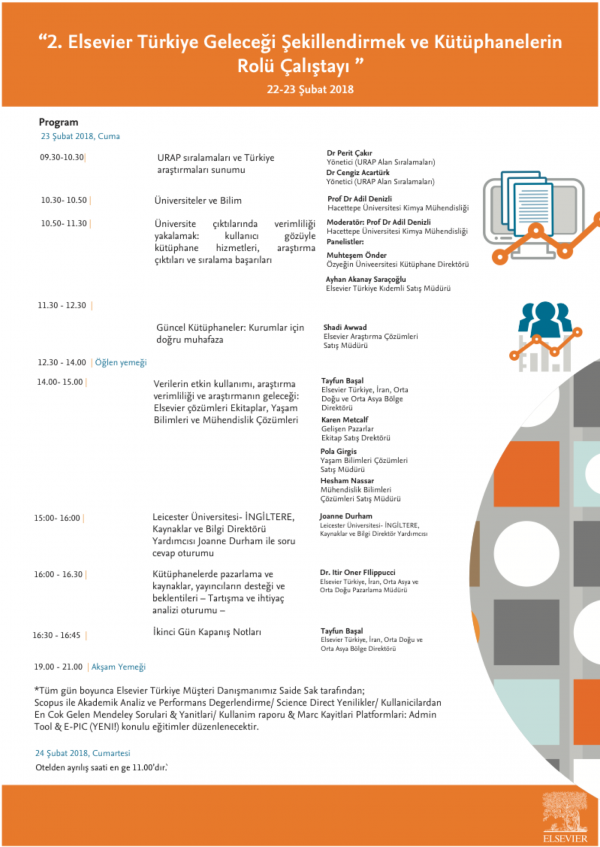
Wednesday, February 28, 2018
2. Elsevier Türkiye Geleceği Şekillendirmek ve Kütüphanelerin Rolü Çalıştayı
22-23 Şubat 2018 Antalya, Turkey
Sayın Adil Denizli, 22-23 Şubat 2018 tarihlerinde Antalya'da yapılan 2. Elsevier Türkiye Geleceği Şekillendirmek ve Kütüphanelerin Rolü Çalıştayı'nda "Üniversiteler ve Bilim" konulu bir konferans vermiş ve aynı zamanda "Üniversite çıktılarında verimliliği yakalamak: kullanıcı gözüyle kütüphane hizmetleri, araştırma çıktıları ve sıralama başarıları" adlı panelde moderatörlük görevini üstlenmiştir.
…Read More
Wednesday, February 28, 2018
2. Elsevier Türkiye Geleceği Şekillendirmek ve Kütüphanelerin Rolü Çalıştayı
22-23 Şubat 2018 Antalya, Turkey
Read More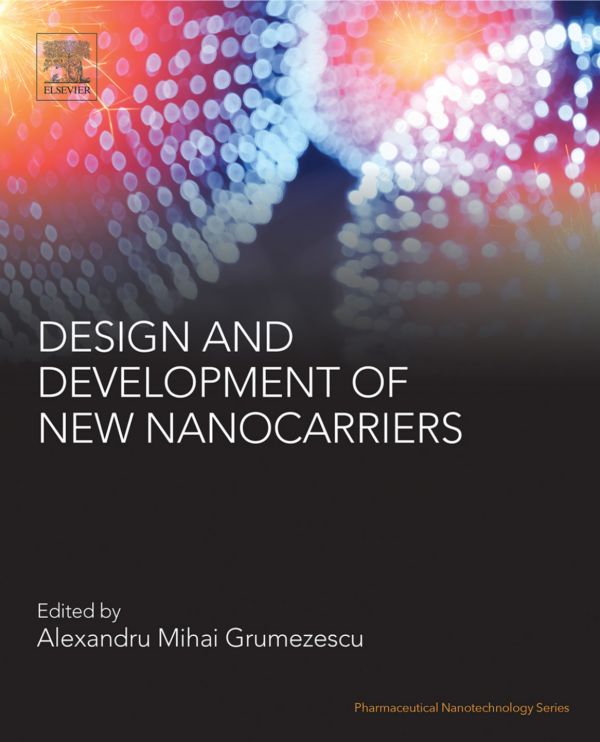
Thursday, December 28, 2017
New Chapters Published in International Books
Design and Development of New Nanocarriers and Nanoscale Fabrication, Optimization, Scale-up and Biological Aspects of Pharmaceutical Nanotechnology
"Therapeutic protein and drug imprinted nanostructures as controlled delivery tools" in Nanoscale Fabrication, Optimization, Scale-up and Biological Aspects of Pharmaceutical Nanotechnology and "Molecularly imprinted polymers as a tool for biomolecule separation" in Design and Development of New Nanocarriers
…Read More
Thursday, December 28, 2017
New Chapters Published in International Books
Design and Development of New Nanocarriers and Nanoscale Fabrication, Optimization, Scale-up and Biological Aspects of Pharmaceutical Nanotechnology
Read More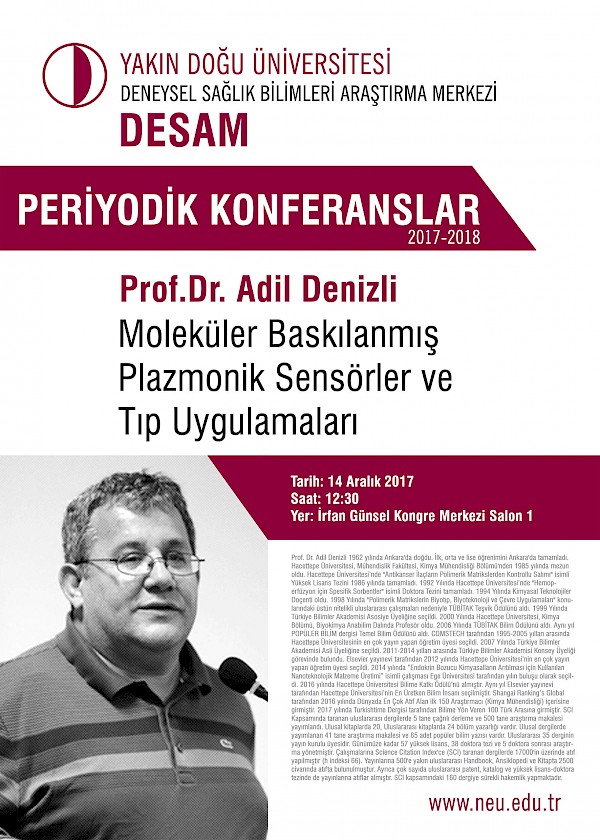
Thursday, December 28, 2017
Moleküler Baskılanmış Plazmonik Sensörler ve Tıp Uygulamaları Konferansı
14 Aralık 2017 tarihinde Yakın Doğu Üniversitesi'nde gerçekleştirildi.
Prof. Dr. Adil Denizli, Yakın Doğu Üniversitesi, Deneysel Sağlık Bilimleri Araştırma Merkezi (DESAM)’ın 2017-2018 Periyodik Konferansları çerçevesinde 14 Aralık 2017 tarihinde Moleküler Baskılanmış Plazmonik Sensörler ve Tıp Uygulamaları isimli bir konferans gerçekleştirmiştir.
…Read More
Thursday, December 28, 2017
Moleküler Baskılanmış Plazmonik Sensörler ve Tıp Uygulamaları Konferansı
14 Aralık 2017 tarihinde Yakın Doğu Üniversitesi'nde gerçekleştirildi.
Read More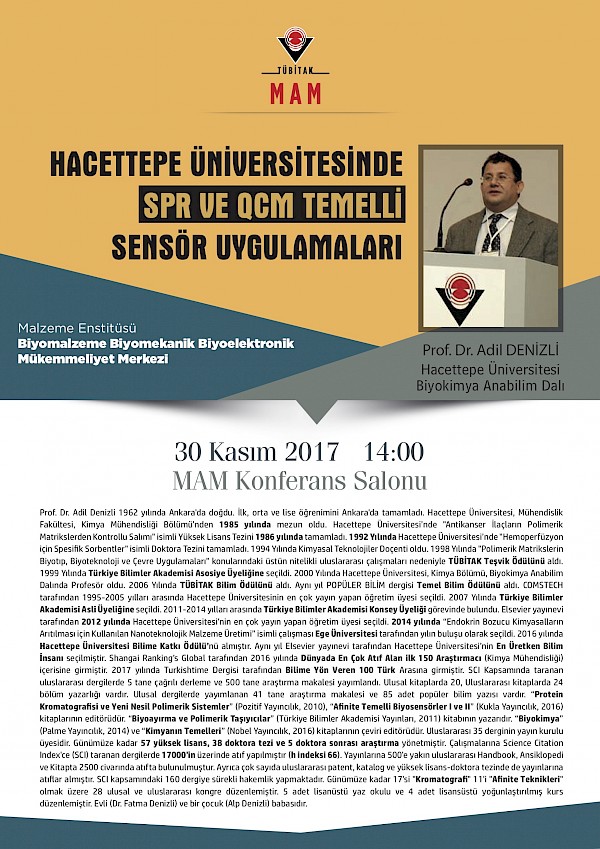
Thursday, December 28, 2017
Hacettepe Üniversitesi'nde SPR ve QCM Temelli Sensör Uygulamaları
Prof. Dr. Adil Denizli, TÜBİTAK MAM Malzeme Enstitüsü Biyomalzeme Biyomekanik Biyoelektronik Mükemmeliyet Merkezi’nin daveti üzerine “Hacettepe Üniversitesinde SPR ve QCM Temelli Sensör Uygulamaları” isimli bir konferans gerçekleştirmiştir.
…Read More
Thursday, December 28, 2017
Hacettepe Üniversitesi'nde SPR ve QCM Temelli Sensör Uygulamaları
Read More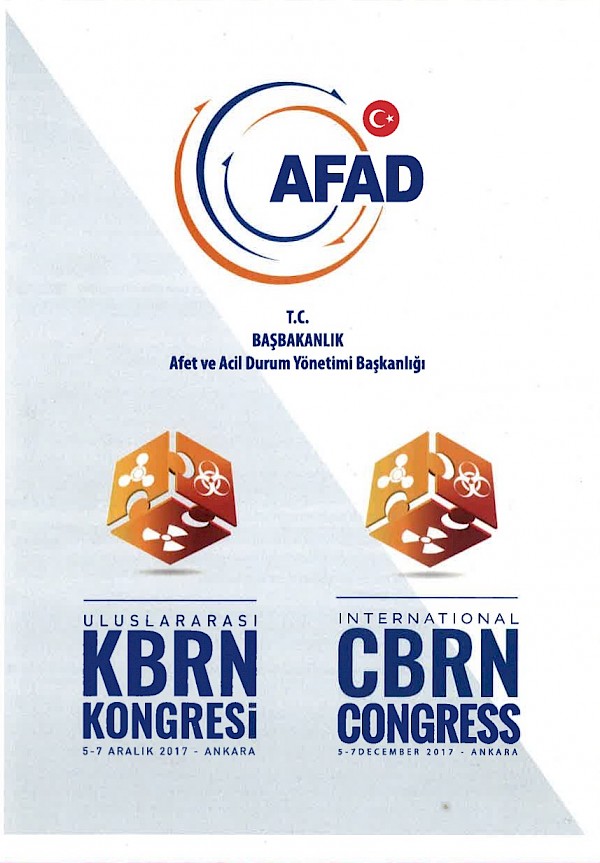
Friday, December 8, 2017
Uluslararası KBRN Kongresi
Uluslararası KBRN Kongresi T.C. Başbakanlık Afet ve Acil Durum Yönetim Başkanlığının (AFAD) Ev Sahipliğinde 5-7 Aralık 2017 Tarihleri arasında Ankara’da gerçekleştirildi. Kimyasal Silahlar ve Savunma Konulu 1. Oturumun Başkanlıklarını Prof. Dr. Adil Denizli ve Prof. Dr. Ömer Azal yaptı. Kongreye kamu kurum ve kuruluşları ile üniversitelerden 1500’e yakın katılımcı katıldı.
…Read More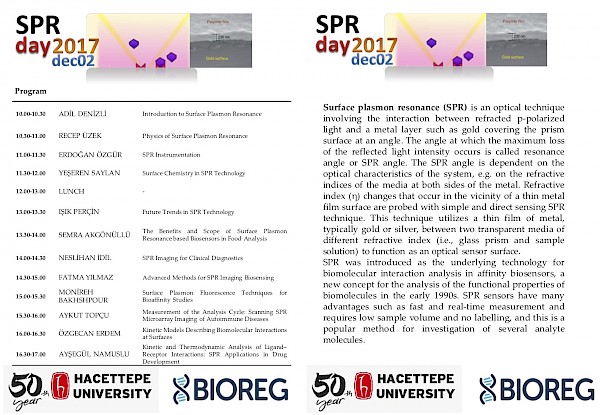
Saturday, December 2, 2017
SPR Nanoday 2017
BIOREG Araştırma Grubunun düzenlediği SPR Nanoday 2 Aralık 2017 cumartesi günü Hacettepe Üniversitesi, Kimya Bölümü konferans salonunda gerçekleştirildi. Yüzey Plazmon Rezonans yönteminin temel ilkeleri ve uygulamaları ile grubumuzun bu alandaki çalışmaları tüm gün süren bu etkinlikte ayrıntılı olarak tartışıldı.
…Read More